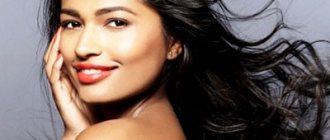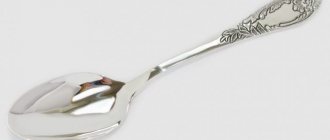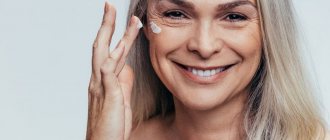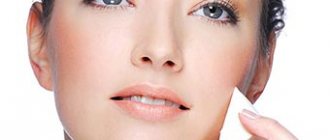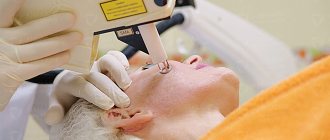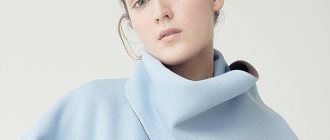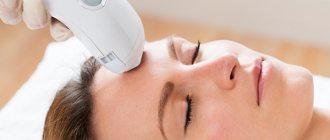Facial anatomy
The face, like many other tissues, undergoes sagging processes under the influence of gravity. This process is called gravitational ptosis. I propose to consider the anatomy of the face layer by layer. It is a layer-by-layer description of facial anatomy from the perspective of the concept of Australian surgeon Brian Mendelson that will help to understand the mechanisms of aging.
Essentially, the face consists of 5 layers: skin, fatty tissue, muscles, ligaments, periosteum and facial skeleton.
- The skin is the outermost layer. Traditionally, facial aging is associated with skin changes, so most treatments begin with skin care. Many people use creams, masks, etc. It really has a positive effect. However, up to a certain age. According to various authors, facial aging begins at the molecular level on average at the age of 30. This process occurs deep in the structures of the skin, so all rejuvenation procedures are essentially care and do not have a long-lasting effect.
- Subcutaneous tissue. Lies under the skin and consists of adipose tissue. The thickness of the fat layer varies in different parts of the face. With age, fat sinks and accumulates in certain places, forming bags under the eyes, jowls, etc.
- Muscles . There are 21 facial muscles on the face. With age, muscles weaken and sag, like a hammock in which fat accumulates. In this regard, working exclusively with the skin will not help achieve aesthetic rejuvenation. After all, even after performing a skin tightening, an array of muscles and adipose tissue will stretch the face and the result of skin procedures will disappear in no more than 1 year.
- Ligaments . With the help of ligaments, the soft tissues of the face are attached to the facial skeleton and are located in certain places. Time and gravity have virtually no effect on the ligaments, so weakened muscles and hanging fat are thrown over the ligaments, forming pronounced age-related contours of the face.
- Periosteum and facial skeleton. The bony skeleton determines the shape of the face and the very uniqueness and individuality of our faces. However, over time, the bone tissue slowly collapses, which creates the preconditions for the heavy mass of the face to slide down.
Rice. 1. Layers of the face according to Mendelssohn
Rice. 2 Mendelssohn's ligaments
Rice. 3 Young and old face
Finely wrinkled type of facial skin aging
This is how about 10% of our women age. They have pronounced wrinkles under the eyes and “crow’s feet”, folds begin to appear above the upper lip, and a fine mesh begins to cover their cheeks. The cheeks themselves also change - they droop down a little. Wrinkles on the neck become visible, and sometimes they appear in the décolleté area, often appear on the forehead (and, moreover, pronounced ones) and, moreover, vertical wrinkles appear that cross out the horizontal ones. Collecting small wrinkles can also appear on the skin of the shoulders and forearms, on the back of the hands. But the most unpleasant thing is that such wrinkles also appear on the bridge of the nose. There is also a general parchment-thinning impression of aged skin.
As for men belonging to this type, they age much later - only from 40–50 years old, due to the large amount of elastin and collagen contained in men’s facial skin. In general, the finely wrinkled type of aging is very noble. As a rule, such faces have ideal, although thin, skin in youth - finely porous and with a beautiful structure. And although with age such skin becomes covered with fine wrinkles, it does not sag and is not prone to swelling. Finely wrinkled faces are usually similar, even if they belong to representatives of different nations. Look, for example, at Audrey Hepburn and Galina Belyaeva.
Or the American model Carmen Dell'Orefice and Maya Plisetskaya. By the way, as you get older, you will envy the finely wrinkled type more and more. The ladies in the bottom photo are well over eighty, or rather Plisetskaya is already about 90, and how perfectly preserved they are! And no, it was not their beautiful essence that came out, but there are also such versions among romantic young ladies - no, this is solely due to their type of aging.
Recommendations For this type of aging, it is very important to ensure that the humidity in the room is not lower than 40–60% - lower humidity will further dry out the already parchment skin. Of course, drink clean water! Neither tea, nor coffee, nor juices, nor other hypertonic liquids saturated with respect to water will help moisturize the cells, and therefore the skin. On the contrary, due to diffusion processes, water will leave the hypotonic cellular cytoplasm, trying to balance the concentrations of fluids inside and outside the cells. Diffusion will cause cells to dry out and fluid to collect in the intercellular space. The consequence of these processes will be stagnation of fluid in the lymphatic system, and hence swelling. Choose the juiciest fruits and vegetables. For example, for vegetables, eat fresh tomatoes and salads including juicy celery. Incorporate simple fruits like cucumber, bell pepper and zucchini into your diet. All these vegetables have a fairly large percentage of moisture. For women and men of this type of aging, vitamin A is an important component of nutrition. For example, you can consume cod liver more often. It is enough to use only 2 teaspoons of cod per day, putting it in a salad or spreading it on bread. Vitamin A is also found in chicken liver or butter. And remember that to fully absorb vitamin A, you definitely need fat.
We repeat: for thin skin of the finely wrinkled type, you definitely need: water, fat and vitamin A.
We nourish the skin externally. The muscle tissue of the finely wrinkled type of aging is well developed, so it is better to pay more attention to the skin. For this type of aging, a scrub-free procedure is recommended—soft and delicate cleansing, followed by toning with hydrosols and applying a moisturizing or nourishing face cream. One of the components of the nourishing cream should be phytoestrogens, because women with fine wrinkles have a slight fat layer on their face. Of course, the best seller of all anti-aging treatments is tretinoin. However, for thin skin, characteristic of the finely wrinkled type, its use can lead to a completely opposite effect. There will be even more wrinkles. Parchment and dryness will increase. Such skin requires an adaptation program and a more oily and less aggressive form of vitamin A - retinol.
Do not forget that wrinkles will appear not only on the face, but also on the hands, neck, décolleté, and forearms. Therefore, retinol creams should be used for body care on a regular basis. The main thing is to be sure that there is a working concentration of vitamin A.
If the skin of the face is quite thin and delicate, then the sun can cause significant harm and premature aging. Therefore, when going outside in the summer or sitting next to a window, always
use sunscreen. Physical protection - zinc and titanium.
Correction of age-related changes
With age, multifactorial processes occur that determine the aging process of the face. These processes affect the facial skeleton and integumentary tissues. After 30 years, the beginning changes in the face are already visually noticeable. Changes in all tissue layers lead to their displacement and downward movement. More pronounced processes occur in the middle third of the face. The decisive factor in the drooping of the integumentary tissues of the face is a change in the bone surface.
- Forehead
Flattening of the frontal bone, combined with constant tension of the frontal muscle, leads to drooping of the integumentary tissues of the upper area of the face and the formation of transverse grooves in the forehead. The sliding mass of soft tissues of the forehead forms excess tissue in the area of the upper eyelids, the tails of the eyebrows droop and a “heavy” look is formed.
- Middle face area
Atrophy of bone tissue and fat packets in the midface area, combined with weakening of the muscles, leads to contusion of the ligaments and grooves. Pronounced bags under the eyes and eye bags form.
- Neck
The framework that holds the tissues of the lower zone of the face is the platysma - the subcutaneous muscle of the neck. Atrophy of the jaw bone, prolapse of the submandibular salivary gland, together with weakening and divergence of the platysma fibers, form an obtuse cervical-mental angle and a “double chin.” Thus, with age we observe: a reduced lower jaw; a stretched space at the bottom of which fat has accumulated; atrophied neck muscles that can no longer hold soft tissue and sag under gravity; the resulting jowls.
Fig.1 Aging according to Mendelssohn
Rice. 2 Bone atrophy according to Mendelssohn
Rice. 3 Facial aging: pronounced folds, jowls, “fat packets”
How to prevent premature aging of facial skin
- Take proper care of your skin
Apply the cream with patting movements. Even the most expensive cream can only do harm if it is smeared over the face, stretching the skin. Apply the cream with your ring fingers, using gentle patting movements. The ring finger is the “weakest”, so when applying cream to it, you will not be able to stretch the skin and harm it.
- Take your vitamins
Regularly use vitamin kits, which include vitamins A, B, C. But if you have early wrinkles, then vitamin E will be most useful for you, because it effectively fights premature aging of facial skin by preventing the action of free radicals and stopping the aging process.
- Eat healthy fats:
fish oil, Omega-3 fatty acids, flaxseed oil. They prevent the premature appearance of wrinkles, increase skin elasticity, and treat inflammation and allergies.
- Drink plenty of water
The skin needs to be moisturized not only from the outside, but also from the inside. Form, as mentioned above, in 21 days, form the habit of drinking at least 1.5-2 liters of water daily. Precisely water, not liquids (tea, coffee, drinks, juices). It is best to start doing this in the morning, as soon as you get out of bed.
- Play sports
Sport maintains health, prolongs life, preserves youth, not only of the skin, but of the entire body. Constant physical activity allows you to keep your muscles and body in good shape, protecting and delaying the appearance of signs of aging. Physical activity saturates our body with oxygen, stimulating blood circulation, which is especially important for the skin.
How to slow down facial aging?
Facial aging is a multifactorial process manifested in bone resorption, changes and sagging of the soft tissues of the face. Procedures for external influence on facial skin are essentially care products that do not bring the proper rejuvenating effect.
- Superficial treatments: creams, ointments, gels and other procedures moisturize and maintain skin condition.
- Injection techniques: fillers and botulinum toxin. Fillers based on hyaluronic acid help fill the volume of tissue that has undergone atrophy, and botulinum toxin relaxes the muscles that form wrinkles. The absolute advantage of these techniques is their reversibility of action. Typically, fillers and botulinum toxin preparations dissolve within 6 months.
- Surgical facial rejuvenation: the most effective method. There are different types of face lifting. It is necessary to approach the choice of face lifting method from the standpoint of existing facial changes, their severity, the patient’s wishes and the surgeon’s capabilities.
Fundamentally, the following types are distinguished: skin lifting; SMAS lifting; MACS-lifting; spacelifting.
- Skin lifting
In the mid-20th century, it was believed that it was skin changes that led to facial aging. However, the era of skin tightening showed its ineffectiveness due to the short-term results - the result lasted no more than 1 year. Modern cosmetology is again resorting to skin tightening using threads. Thread lifting gives short-term results and makes sense for initial facial changes. Pronounced age-related changes are not properly corrected with the help of threads, so their use must be strictly dosed.
- SMAS lifting
SMAS is a complex acronym that stands for the entire muscular aponeurotic complex of the face. After separating the skin layer from the muscle layer, an incision is made and the facial muscles are tightened and fixed in a new position. At the same time, the neck is lifted and jowls are eliminated. After the muscles are moved to the new position, excess skin is created, which is removed and the skin is sutured along the incision around the auricle. Therefore, this type of lifting is suitable for pronounced changes in the middle zone of the face, the presence of jowls and a flabby neck.
- MACS-lifting
It is considered a low-traumatic technique. Through a small incision near the auricle, the skin is peeled off and the muscles are tightened using purse-string sutures. The difference from SMAS is that the muscles do not move and are fixed, but are stretched like a drum, which will soon lead to drooping of the face. However, the commercial attractiveness of this method is very high. It is worth remembering that this method can only be good for initial changes - just like thread lifting.
- Spacelifting
The essence of the operation developed by Dr. Mendelson is to eliminate the facial spaces that stretch under the influence of gravity. Since these spaces exist only in certain areas of the face, spacelifting does not provide a comprehensive lift and does not allow for significant rejuvenation of the neck area. Therefore, spacelifting gives a good rejuvenating effect in the middle zone of the face with unexpressed changes in the neck.
Muscular (muscular) morphotype
Example: Cindy Crawford
It is more typical for Asian face types, but can also occur in our area, in Europe. It is considered the most favorable type of aging, since due to high cheekbones the oval of the face does not sag, wrinkles are practically invisible or can be quickly corrected with proper care. Owners of this type can forget about the signs of aging for a long time and often look younger than their years.
